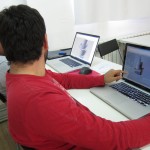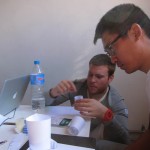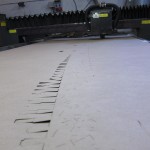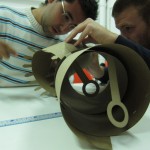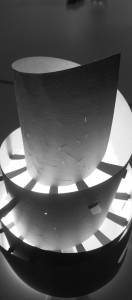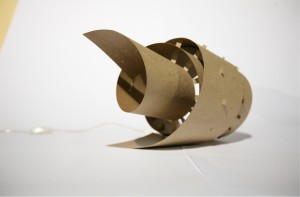
In this milling exercise we tried to create a panel that would show the contradiction between a smooth surface and a more machine made- industrial set of drilled points. We used a surface as the starting point and on it we traced a set of irregular curves that went through only the first layer of our valcromat panel. For this first strategy we selected the 54mm ball mill in order to produce a rather smooth surface at the boundaries of our curves. Moving on we selected a second set of surfaces and from these we produced points that we then used for our second strategy. This time we used the 10mm flat mill and we tried to go through the second layer of the material to bring out the contradiction of the techniques even more.

1st Strategy – Engraving on curves – Tool : 54 Ballmill – Duration : 45 minutes
2nd Strategy – Engraving on points – Tool : 10 Flatmill – Duration : 20 minutes



